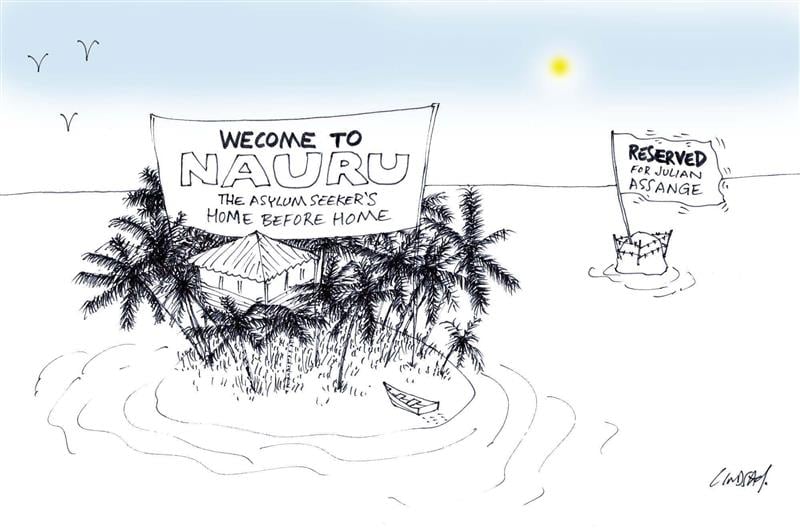No one wants to return to the days of asylum seekers taking high risks in coming to Australia by boat, however, seeking asylum for protection from persecution is legal under the 1951 Refugee Convention, to which Australia is a signatory.
Coalition and Labor governments have nonetheless adopted boat turn backs, offshore processing, coercion, naval Operation Sovereign Borders, secrecy over ‘on-water matters’ and long periods of detention here and in Nauru and PNG. The Coalition has even been reluctant to accept offers from other countries for resettlement and routinely called asylum seekers ‘unlawful non-citizens’’ – a wrong and nasty descriptor designed to turn people against refugees.
Australia’s treatment of people seeking asylum is a national shame. Indefinitely locking people up has a devastating impact on their mental and physical health and is tearing families apart.
Asylum Seeker Resource Centre senior solicitor Rachel Saravanamuthu.

As a responsible nation, we should take a long-term, cooperative, transparent approach and work with neighbours, the High Commissioner for Refugees and the International Organisation for Migration to deliver fairer outcomes for refugees.
Chris Simpson, Democrats spokesperson for Refugees and asylum seekers
Our Plan
| 1. | Permanently end offshore processing, close offshore detention centres and bring all refugees in those centres to Australia. Fast-track assessments fairly and properly resource immigration officers. |
| 2. | Repeal the mandatory detention provision in the Migration Act and codify the law to prohibit detention of children |
| 3. | Work towards ending the practice of forcing back all boats carrying asylum seekers in favour of good faith search and rescue and cooperation with governments in the region for safe disembarkation and paths to protection, consistent with the Refugee Convention. |
| 4. | Establish a fairer process for claiming asylum and properly resource immigration processing to allow genuine refugees while turning away economic migrants from stable countries |
| 5. | House new arrivals in reception centres for no more than 12 weeks to establish bona fides and health checks, detain only those asylum seekers who are a real risk to society and ensure judicial oversight. |
| 6. | Repeal the legislation that denies asylum seekers who do not have a valid visa access to the Refugee Status Determination process and or financial support while applications are processed. |
| 7. | Repeal temporary protection visas and restore permanent protection and family reunion. |
| 8. | Establish an emergency response intake program in response to crises in for instance Afghanistan, Ethiopia, and Myanmar. |
| 9. | Forward plan cooperation with low-lying countries in our region to ensure orderly movement of people in response to climate crises. |
| 10. | Reserve working rights to our near neighbouring countries and from countries that have major human rights issues or crises. |
| 11. | Increase our Humanitarian Program above its current ceiling of 13,750 places (the migration program is set at 160,000 places) |
| 12. | End the practice of deporting long-standing Australian citizens if they commit any crime |
Photo: Australian Human Rights Commission, Curtin Detention Centre

